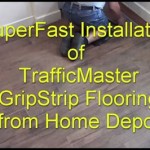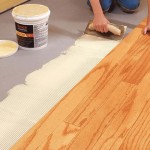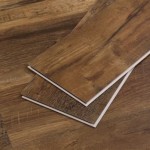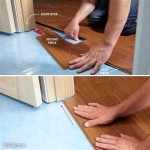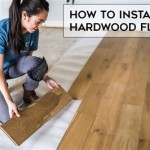Luxury Vinyl Tile Flooring: A Comprehensive Look at the Pros and Cons
Luxury Vinyl Tile (LVT) flooring has rapidly gained popularity as a versatile and appealing alternative to traditional flooring options like hardwood, tile, and laminate. Its robust construction, realistic aesthetics, and ease of maintenance have made it a favored choice for both residential and commercial spaces. However, like any flooring material, LVT flooring presents both advantages and disadvantages that merit careful consideration before making a purchasing decision. This article provides a detailed examination of the pros and cons of LVT flooring, enabling informed choices tailored to specific needs and priorities.
Durability and Resilience
One of the most compelling advantages of LVT flooring is its exceptional durability. Composed of multiple layers, including a wear layer, a design layer, and a backing layer, LVT is engineered to withstand heavy foot traffic, impacts, and scratches. The wear layer, typically made of a clear, protective coating, shields the underlying design from daily wear and tear. Thicker wear layers offer enhanced protection, making them suitable for high-traffic areas such as hallways, kitchens, and commercial settings. This robust construction translates to a long lifespan, often ranging from 10 to 25 years or even longer with proper maintenance.
Furthermore, LVT is significantly more resistant to moisture than natural hardwood or laminate flooring. Its waterproof or water-resistant properties make it an ideal choice for areas prone to spills and humidity, such as bathrooms, laundry rooms, and basements. Unlike hardwood, which can warp, swell, or rot when exposed to moisture, LVT remains dimensionally stable and unaffected by water damage. This inherent resistance to moisture also inhibits the growth of mold and mildew, promoting a healthier indoor environment.
The resilient nature of LVT provides a level of comfort underfoot that is often lacking in harder flooring options like ceramic tile or stone. The cushioned layers of LVT offer a degree of give, reducing fatigue and providing a more comfortable surface for standing or walking. This makes it a particularly appealing choice for areas where people spend extended periods of time, such as kitchens or home offices. Moreover, the impact resistance of LVT can help to minimize noise transmission, creating a quieter and more comfortable living or working environment.
Aesthetics and Design Versatility
LVT flooring excels in replicating the look and feel of natural materials such as hardwood, stone, and ceramic tile. Advanced printing technology allows manufacturers to create highly realistic visuals with intricate patterns, textures, and color variations. Embossed textures further enhance the authenticity, mimicking the grain patterns of wood or the subtle imperfections of stone. This ability to replicate natural materials makes LVT a versatile option for achieving a desired aesthetic without the higher cost and maintenance requirements associated with those materials.
The design versatility of LVT extends beyond replicating natural materials. It is available in a wide array of colors, patterns, and styles, allowing for customization and creative expression. From classic wood plank designs to contemporary geometric patterns, LVT offers endless possibilities for complementing various interior design schemes. The availability of different sizes and shapes, including planks and tiles, further enhances the design flexibility, allowing for unique and personalized installations. Some LVT products also feature grout lines, adding to the realism and providing a more authentic tile-like appearance.
Another aesthetic advantage of LVT is its ability to conceal subfloor imperfections. Unlike some flooring options that require a perfectly level and smooth subfloor, LVT can often be installed over minor irregularities without telegraphing them to the surface. This can save time and expense during installation, as extensive subfloor preparation may not be necessary. Furthermore, LVT's dimensional stability helps to minimize gaps and warping, contributing to a clean and seamless appearance.
Installation and Maintenance
Compared to many other flooring options, LVT is generally considered to be relatively easy to install. Many LVT products are designed with click-lock systems, which allow for a floating installation without the need for adhesives. This simplifies the installation process, making it suitable for DIY projects or professional installations. The interlocking planks or tiles snap together securely, creating a seamless and stable surface. For glue-down installations, specialized adhesives are available that provide a strong and durable bond to the subfloor.
The ease of maintenance is another significant advantage of LVT flooring. Its smooth, non-porous surface resists stains, spills, and dirt, making it easy to clean with simple household cleaners. Regular sweeping or vacuuming is typically sufficient to remove dust and debris. For more thorough cleaning, a damp mop with a mild detergent can be used. Unlike hardwood, LVT does not require waxing, polishing, or refinishing. Its low-maintenance nature saves time and effort, making it a practical choice for busy households or commercial environments.
Furthermore, LVT is resistant to fading and discoloration caused by sunlight exposure. Its UV-resistant properties help to maintain its color and appearance over time, even in areas with high levels of sunlight. This makes it a suitable option for rooms with large windows or skylights. The durable wear layer also protects the underlying design from wear and tear, preserving the flooring's aesthetic appeal for years to come. However, using window coverings to minimize direct sunlight exposure can further enhance its longevity.
Cost Considerations
While LVT generally offers a good balance of price and performance, its initial cost can vary depending on the quality, brand, and thickness of the material. Higher-end LVT products with thicker wear layers and more realistic designs tend to be more expensive than entry-level options. Installation costs can also vary depending on the complexity of the project and whether it is a DIY or professional installation. However, when considering the long-term cost of ownership, including maintenance and replacement costs, LVT often proves to be a cost-effective flooring solution.
Compared to natural materials like hardwood and stone, LVT is typically more affordable. It offers a similar aesthetic at a fraction of the cost, making it an attractive option for budget-conscious homeowners or businesses. The lower installation costs associated with LVT can also contribute to overall savings. Furthermore, the durability and longevity of LVT reduce the need for frequent replacements, further minimizing long-term expenses.
Although LVT is an appealing option for its cost-effectiveness, the cost of subfloor preparation is also a very important factor to consider. If the subfloor is uneven, damaged, or requires extensive repairs, the costs for its preparation can significantly increase the overall expense. Therefore, it's important to assess the condition of the subfloor before investing in LVT flooring.
Environmental Considerations
The environmental impact of LVT flooring is a growing concern for many consumers. Traditional LVT is often made from polyvinyl chloride (PVC), a synthetic plastic polymer that can be harmful to the environment during production and disposal. However, many manufacturers are now offering eco-friendly alternatives that are made from recycled materials or bio-based polymers. These sustainable LVT options reduce the reliance on virgin PVC and minimize the environmental footprint of the flooring.
The durability and longevity of LVT can also contribute to its environmental sustainability. By lasting longer than other flooring options, LVT reduces the need for frequent replacements, conserving resources and minimizing waste. Furthermore, LVT can be recycled at the end of its lifespan, further reducing its environmental impact. Some manufacturers offer take-back programs that facilitate the recycling of LVT flooring.
It is important to consider the volatile organic compound (VOC) emissions of LVT flooring. VOCs are chemicals that can be released into the air from certain materials, potentially affecting indoor air quality. Look for LVT products that are certified by independent organizations such as FloorScore or GreenGuard, which ensure that they meet stringent VOC emission standards. Choosing low-VOC LVT flooring can help to create a healthier indoor environment for occupants.
Potential Drawbacks of LVT Flooring
Despite its numerous advantages, LVT flooring also presents some potential drawbacks that should be considered. While LVT excels at replicating natural materials, it may not possess the same authentic feel as real hardwood or stone. Some discerning individuals may be able to detect the difference in texture and appearance, particularly in lower-quality LVT products. The overall effect can depend on the quality of the LVT and the expertise of the installer.
While LVT is relatively resistant to scratches and dents, it is not completely impervious to damage. Sharp objects or heavy furniture can still cause surface scratches or indentations, particularly in LVT with thinner wear layers. It is important to take precautions to protect LVT flooring from potential damage, such as using furniture pads and avoiding dragging heavy objects across the surface. Repairing damaged LVT can sometimes be challenging, as it may be necessary to replace individual planks or tiles.
Another potential drawback of LVT is its sensitivity to extreme temperatures. Prolonged exposure to direct sunlight or high temperatures can cause LVT to expand or contract, potentially leading to warping or buckling. It is important to maintain a consistent indoor temperature and avoid exposing LVT to extreme temperature fluctuations. In areas with high levels of sunlight, using window coverings can help to minimize the risk of temperature-related damage.
Finally, the resale value of a home might not be significantly increased by LVT flooring, as opposed to hardwood floors. While LVT offers numerous practical benefits and aesthetic appeal, some homebuyers may still prioritize natural materials like hardwood when evaluating a property's value. Therefore, while LVT is a durable and aesthetically pleasing option, it's essential to consider the potential impact on resale value, especially if that's a significant factor in the decision-making process.
Conclusion
In summary, Luxury Vinyl Tile flooring presents a compelling combination of durability, aesthetics, ease of installation, and affordability. Its ability to replicate natural materials, coupled with its resistance to moisture and wear, makes it a versatile option for a wide range of applications. However, it is essential to weigh these advantages against the potential drawbacks, such as its lack of complete authenticity and sensitivity to extreme temperatures. By carefully considering the pros and cons of LVT flooring, individuals can make informed decisions that align with their specific needs, budget, and aesthetic preferences.
Pros And Cons Of Luxury Vinyl Flooring In Basements

Vinyl Flooring Pros And Cons Forbes Home

Vinyl Flooring And Floor Tiles The 8 Pros Cons

Vinyl Plank Flooring Vs Laminate Porcelain Linoleum Pros Cons Of Luxury Tile Wood

Vinyl Vs Laminate Flooring Pros Cons And Differences Forbes Home

Luxury Vinyl Tile And Plank Flooring Pros Cons
%2022340_BarnhouseOak_Weathervane_RS-23.jpg?strip=all)
Luxury Vinyl Flooring Pros Cons America

Luxury Vinyl Tile All Your Questions Answered Right Here

Luxury Vinyl Vs Hardwood Pros And Cons Svb Wood Floors

What Is Rigid Core Flooring And Should You Get It
Related Posts


